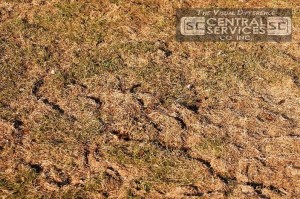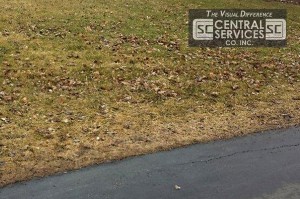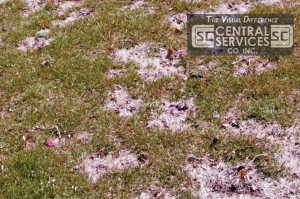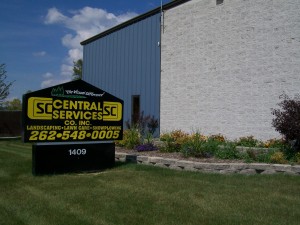Winter Lawn Damage Repairs
As the temperatures start to rise, you may notice your lawn is not looking as well as it did in fall. Most lawns experience winter damage in one way or another, some worse than others. The good news is most damage is easily rectified. The first step is for you or a lawn specialist to determine the cause and then come up with the appropriate solution. Over the years we have noticed the top three concerns and causes of winter damage are salt, voles and snow mold.
Salt damage: Salt damages your grass because the salt draws the moisture away from the roots and dries out the turf area. Salt damage is typically on the edges of the road, driveway and sidewalks.
What can be done: A professional can apply a organic Gypsum product to the salt damage areas. It should be applied only when the area has dried out and temps are averaging around 40-50 degrees. Gypsum is a calcium sulfate that replaces the salt with calcium and sulfur to help heal the damaged grass. It will then help retain the moisture in the soil to promote healthy grass. Once applied it should be watered in well. If the lawn has been severely damaged by salt, shoveling and plowing damage, a top soil and seeding is recommended. If you are looking to prevent the damage from returning every year in areas that are prone to salt damage, a salt tolerant seed can be applied. A salt tolerant seed is a wider blade grass and can withstand the salt.
Voles: Voles are small rodents with short tails and legs. They like to feast on lush grass under the snow. They can leave tunnels of dead grass in their path’s and this is typically what we see when the snow cover melts. When the voles chew on the grass leaves they typically leave the root system in tack.

What can be done: Once the grass and soil dries out from the melting snow, rake away the dead grass and you can let nature take its course. The grass will grow back in, filling in the tunneled areas. If the damage is significant a spot seeding can be done to promote more grass growth. Voles can become a nuisance and a consistent problem, a professional can help with safely applying repellents to remedy the problem.
Snow Mold: Snow mold is a fungus that appears on the lawn area after the snow has melted. Snow mold appears in circular, matted down patches that can be gray or pink in color. A lawn specialist from Central Services can help identify your snow mold. Gray snow mold can be rectified on its own, however pink snow mold is harder to treat.
What can be done: Gray snow mold will typically clear up on its own once the weather starts to warm up. It is only active up to temperatures that reach approximately 45 degrees. Pink Snow Mold can interfere with the root system of your grass and do permanent damage if not treated. The best solution for pink mold is to have a professional treat the areas with a fungicide. Pink mold is active when temps are between freezing and 60 degrees.
Spring is also a great time to have a lawn specialist from Central Services to evaluate your lawn condition for weeds and fertilizing needs. The sooner a yard is treated the better the outcome. Spring is a good time to put down a pre-emergent so that you can prevent any new weeds from seeding in. A spring application must be done in early spring before the temperatures start to rise. Here at Central Services we recommend having our horticulturists meet with you at your property and go over your concerns, and they can recommend solutions for you landscape maintenance needs.
Contact Us
We would love to hear from you! Please fill out this form and we will get in touch with you shortly.






